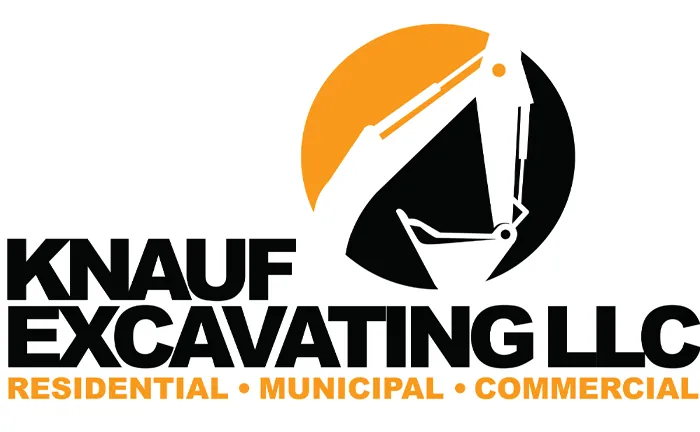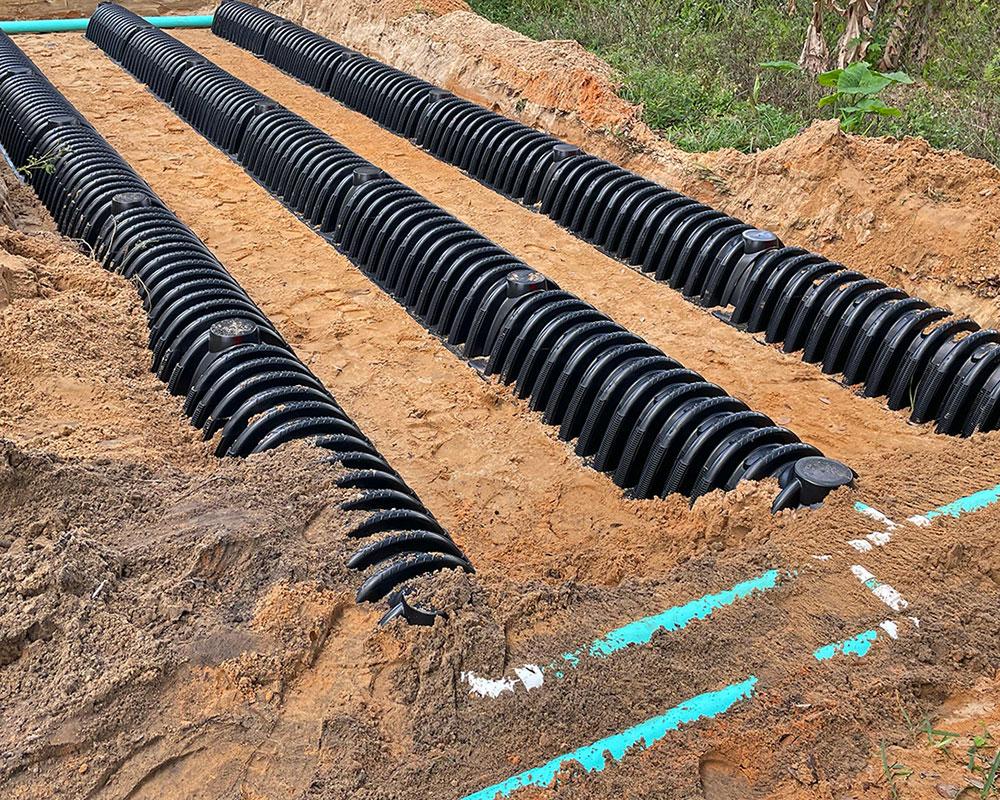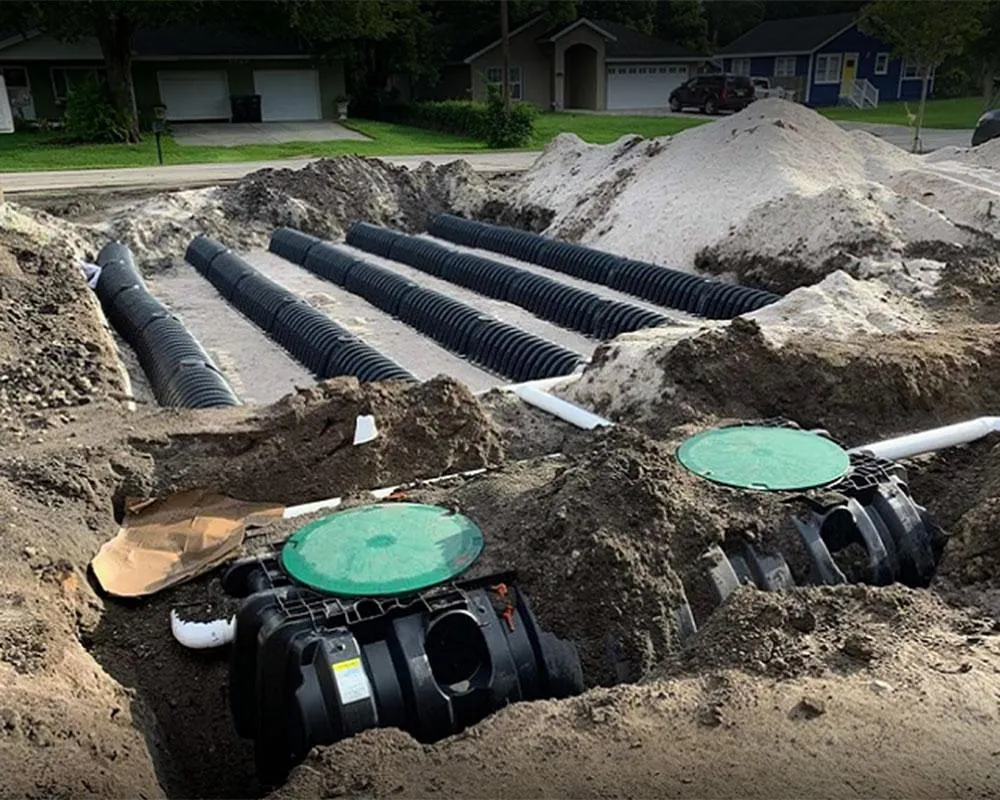
Serving Wisconsin Counties: Marathon, Oneida, Villas and Lincoln Counties
Drain Field Replacement near Marathon County, Wisconsin
Knauf Excavating LLC is Committed to superior quality and results!

AVOID COSTLY MISTAKES:
Do NOT hire an excavating contractor without first reading our free guide:
The ULTIMATE Excavation & Septic "Success Guide."

Drain Field Replacement near Marathon County, Wisconsin
When your septic system starts failing, it often begins with the drain field. Maybe you’ve noticed gurgling pipes, soggy patches in the yard, or strong odors after rain. These are signs that the soil beneath your system can no longer absorb wastewater properly. Across Marathon County, Wisconsin, that’s a common challenge due to clay-heavy soils and cold winters. Replacing your drain field isn’t just maintenance—it’s protection for your home, your property value, and your family’s health.
How Can We Help?


Why Drain Field Replacement Is So Important
A functioning drain field filters and disperses wastewater safely into the ground. When it fails, untreated water can rise to the surface or flow toward nearby wells. In Wisconsin’s climate—where frost, dense soil, and seasonal water levels are constant challenges—drain fields eventually wear out. A replacement ensures your system can handle the load of modern living, reduce maintenance needs, and restore reliability.
The Benefits of Drain Field Replacement near Marathon County, Wisconsin
Choosing to replace your drain field brings several major advantages:
Dependable performance through seasonal changes and heavy moisture.
Health protection, keeping bacteria and effluent underground where they belong.
Cleaner property, with no standing water or bad smells.
Improved resale value, since a new system satisfies inspection requirements.
Long-term savings, replacing constant repairs with a single, lasting fix.
Environmental protection, keeping Marathon County’s groundwater safe.
Compliance, ensuring your installation meets Wisconsin codes and local setbacks.
A replacement is more than a repair—it’s a full reset for your septic system’s efficiency and lifespan.
The Benefits of Hiring a Drain Field Replacement near Marathon County, Wisconsin
Hiring local professionals for drain field replacement makes a big difference. A crew familiar with Marathon County knows how to design for soil type, elevation, and drainage. Benefits of hiring local experts include:
Knowledge of local soil and terrain, from clay flats to wooded slopes.
Smooth permitting, with direct coordination through county offices.
Right system selection, balancing mounds, trenches, or chambers for your specific lot.
Clear communication, so you know what’s happening at every step.
Seasonal scheduling awareness, avoiding frozen ground delays.
Responsible cleanup, leaving your yard restored after installation.
A local installer also knows how to protect lawns, driveways, and existing landscaping while working—details that matter when your home’s on the line.
Signs You May Need a Drain Field Replacement
If your system isn’t draining like it used to, watch for these red flags:
Frequent septic pumping with little improvement.
Persistent wet areas or bright green stripes across your yard.
Foul odors near the tank or vent after rainfall.
Slow drains and gurgling toilets across multiple fixtures.
Multiple short-lived repairs that don’t solve the issue.
These are signs the soil has become saturated or clogged with organic buildup. A full replacement restores balance, function, and peace of mind.
See Our Excavation & Septic Services

✔️ Commercial Excavation
✔️ Residential Excavation
✔️ Swimming Pool Excavation
✔️ Basement Digging
✔️ Basement Backfill
✔️ Shoreline Restoration
✔️ Driveway Construction
✔️ Municipal Excavating
✔️ Snow Plowing Service
✔️ Demolition
✔️ Large Pond Construction
✔️ Small Pond Construction
✔️ Dozer Work
✔️ Septic Inspections
✔️ Septic System Pumping
✔️ Septic Installs Traditional Systems
✔️ Septic Tanks - Aerobic Systems
Quality Services Launched FAST!

✔️ Septic Tanks - Plastic/Poly
✔️ Septic Tanks - Concrete
✔️ Drain Field Replacement
✔️ Forestry Mulching
✔️ Grading, Lot Clearing
✔️ Retaining Walls
✔️ Sewer Repairs
✔️ Drainage Systems
✔️ Concrete Flatwork
✔️Driveways, Sidewalk, Foundations
✔️ Foundation Repairs
✔️ Full Site Preparation
✔️ Trenching
✔️ Utilities Trenching
✔️ Grade Shed Pad
✔️ Site Construction
What Are You Waiting For?
The Process for Hiring a Drain Field Replacement near Marathon County, Wisconsin
A successful replacement follows a clear and predictable process:
Initial Consultation – Discuss system age, household size, and existing issues.
Site Evaluation – The technician locates existing components, checks slopes, and identifies safe installation zones.
Soil Testing and Design – Licensed evaluators test the percolation rate, depth to mottling, and overall soil quality to create a compliant design.
Permitting – All plans are submitted to Marathon County for approval. Local inspectors ensure the design meets setback and code standards.
Installation – The crew excavates carefully, installs new laterals or chambers, and ensures proper distribution of effluent.
Backfilling and Grading – The area is smoothed, compacted, and prepped for reseeding.
Final Inspection – County officials confirm the installation matches the approved plan.
Homeowner Guidance – You’ll receive maintenance tips, care guidelines, and inspection records for your files.
This organized process ensures everything runs smoothly, legally, and safely.
Drain Field System Options in Wisconsin
Wisconsin properties often require different drain field types depending on soil and elevation. Common options include:
Conventional trench systems, for sandy soils that drain well.
Pressure distribution systems, to evenly distribute effluent across laterals.
Mound systems, where a raised bed creates proper separation from groundwater.
Chamber systems, offering compact installation and efficient flow.
The right design depends on your lot’s soil composition, slope, and available space.
Understanding Cost and Long-Term Value
A new drain field is a serious investment—but a worthwhile one. Rather than spending money on constant pumping and patchwork fixes, replacement gives you stability for decades. Costs typically include design, excavation, gravel, piping, hauling, permitting, and landscaping restoration. Always compare quotes based on materials, experience, and warranty coverage—not just the bottom-line price. The best value combines durability, performance, and peace of mind.
Preparing for Your Drain Field Project
Before installation day:
Ensure driveways and paths are clear for equipment.
Mark private utilities and remove obstacles near the work zone.
Move vehicles, trailers, or boats out of the access area.
Plan for temporary yard disruption and reseeding afterward.
Your contractor will handle erosion control and restoration to leave your property looking clean and safe.
Maintaining a New Drain Field
Once your new system is in place, protect it with proper care:
Pump your septic tank every 2–3 years.
Conserve water and space out large laundry loads.
Keep heavy vehicles, sheds, and decks off the drain field area.
Redirect gutters and sump pumps away from the system.
Use septic-safe cleaning products and fix leaky fixtures quickly.
Simple habits like these can extend your drain field’s life by decades.
Start Planning Your Drain Field Replacement near Marathon County, Wisconsin
When your septic field fails, waiting only makes things worse. With a careful inspection, compliant design, and expert installation, you can restore reliability before the next heavy rain or freeze. A properly built drain field replacement keeps your home comfortable, clean, and safe for years to come—something every Wisconsin homeowner deserves.
Hours: Mon-Fri 7AM-5PM
Extended hours by appointment only.
Address: 1250 W. Campus Dr. Wausau, Wisconsin 54401
All rights reserved | Client Support Area